Module Introduction
Mindfulness in Context
Mindfulness is rooted in Buddhist traditions and incorporates meditation techniques. It has been practiced for millennia and involves maintaining awareness of one’s mind’s contents in the present moment. Thousands of studies have documented the physical and mental health benefits of mindfulness. It can strengthen the immune system, help with stress, fight off depression, improve memory and decision-making, enhance relationships, increase self-esteem and creativity, and reduce bias and prejudice.
Mindfulness has gained widespread popularity in the United States owing to its effectiveness and the pioneering efforts of Jon Kabat-Zinn. In 1979, Kabat-Zinn introduced the Mindfulness-Based Stress Reduction (MBSR) program at the University of Massachusetts Medical School. Since its inception, schools, prisons, hospitals, and veterans centers have regularly integrated MBSR and similar mindfulness activities. Additionally, the popularity of meditation apps and guided relaxation exercises has further contributed to its prevalence.
Researchers and practitioners continue to expand the science and practice of mindfulness to be more diverse and inclusive. For example, recommendations for building inclusiveness within Latinx communities include translating mindfulness practices into Spanish, adapting metaphors to include stories or sayings from Latinx culture, and adapting goals to affirm values, customs, and traditions. These adaptations can support migrant and first-generation Latinx communities with coping with stressors, like navigating cultural values, managing difficult emotions resulting from discriminative experiences, and challenges related to language barriers. Adaptations to mindfulness practices can uplift culturally important strengths within Latinx culture, like community, family, and social relationships.
Individual Exploration
What is Mindfulness?
Mindfulness invites us to become the observer of moment-to-moment awareness of our thoughts, emotions, physical sensations, and surrounding environment with curiosity and kindness. There are many ways to practice mindfulness, such as meditation, focusing on the breath, and seizing “micro-moments” to notice sensations, like your feet on the ground or the sounds of rustling leaves. Mindfulness involves acceptance, meaning that you pay attention to your thoughts and feelings without judging them—without believing, for instance, that there’s a “right” or “wrong” way to think or feel in a given moment. When you practice mindfulness, your thoughts tune into what you’re sensing in the present moment rather than rehashing the past or imagining the future.
Listen to Jon Kabat-Zinn define mindfulness.
Mindfulness in Childhood
Young children, who are led by their innate curiosity to explore the world and all the sensations it has to offer, are often naturally mindful. But as they get older, children’s minds can be flooded with fears about the future, regrets about the past, and self-judgment.
Children of all ages can benefit from mindfulness practices. For example, studies have found that more mindful 8-to-10-year-olds were less negatively affected by the COVID-19 pandemic; more mindful adolescents have a higher pain tolerance and are less likely to struggle with Internet “addiction”; and more mindful college students are better able to bounce back from academic challenges. While these studies do not prove that mindfulness is directly or solely responsible for these outcomes, they suggest that more mindful children may be more emotionally resilient.
Fortunately, there are ways to teach children mindfulness. Teaching mindfulness-based yoga to preschoolers can improve their self-regulation skills. Videos can teach children to take deep breaths and reduce stress. School-based mindfulness training can increase resilience, executive function, attention, and kind behavior and decrease behavior problems and anxiety (although this is not universally true).
Given the mental health crisis for teens, mindfulness may be especially beneficial to this age group. When teens participated in a five-day mindfulness retreat involving seated and walking meditations, yoga, and workshops, they felt less stressed and depressed and more happy, self-compassionate, and satisfied with their lives—and they still reported feeling better three months later. A study of teen girls found that those who were better at differentiating their emotions—a skill that can be improved with mindfulness—were less likely to go on to develop depression or anxiety when faced with stressors. Once teens arrive at college, a brief mindfulness training may reduce binge drinking, according to one pilot study.
Mindfulness in Parenthood
Mindfulness can also help support parental well-being, which has downstream benefits for children. More mindful mothers of preschoolers have less parenting stress, depression, and anxiety. Parents who are less self-critical of their parenting have adolescents with fewer symptoms of anxiety and depression. Parents who engage in more mindful parenting also share more positive emotions during difficult conversations with their adolescent children, and their children are less likely to use drugs or have anxiety, depression, or act out.
Mindfulness doesn’t come naturally to everyone, and teaching parents to become more mindful and to engage in mindful parenting can pay large dividends for the whole family. Research shows that teaching parents mindfulness techniques reduces parenting stress and improves child psychological functioning. In one study, parents who attended an eight-week Mindful Families Stress Reduction (MFSR) course with their early-adolescent children reported decreased stress and increased mindfulness, and their children said that their parents paid more attention to them after the course. This study also found changes in areas of the parents’ brains involved in self-awareness, emotional awareness, emotional regulation, and empathy.
Nurturing Mindfulness
Here are some strategies that experts suggest parents can take to become more mindful in their parenting and foster mindfulness in their children:
- Recognize that most parenting issues are temporary: “Some of the best parenting advice ever given to me was to add ‘…for now’ to the end of my observations about my child,” says school psychologist Sarah Wheeler. “‘He’s not sleeping through the night…for now’ or ‘She refuses to wear anything but her Superman costume…for now.’”
- Accept that your child has shortcomings: “Most well-adjusted adults had several difficult traits as children (I, for one, was a major tantrum-thrower), and it all turned out fine,” says Wheeler. Children’s development involves figuring out how to respond to new experiences and challenges–it’s a learning process.
- Accept that you (and your parenting) have shortcomings: “If you find yourself constantly striving toward some unrealistic ideal or scrutinizing your every move, it may be time to throw away the parenting books (or unfollow the parenting blog) and focus on listening to your instincts,” says Wheeler.
- Take a head-to-toe inventory: “A kid can sense any glimmer of doubt you have, and what they’re really seeking is your clarity, your certainty,” says Sheri Glucoft Wong, co-author of Raising Kids: Your Essential Guide to Everyday Parenting. Check in with your head, heart, and instincts to get them aligned with your actions to support your child.
- Teach children that feelings and behaviors are temporary: “A feeling is just a feeling and not something that defines your life…they can experience a range of feelings—the pleasant ones and the unpleasant ones—and know that every feeling has a shelf life—they come and go,” says Wong. “A behavior is just a behavior in that moment and doesn’t define your character or who you are.”
- Recognize when you need to adjust your schedule: It’s hard to be mindful when you’re hungry, tired, or rushing out the door. When possible, building in some buffer time can give parents the space they need to connect and listen to their children. What’s more, children benefit from some time to make a predictable transition from one activity to another.
- Use your phone intentionally: It’s more difficult to be mindful with your children when technology is vying for your attention. Practice putting your phone away for specific activities, like during dinner or while you put your child in bed, and for specific amounts of time, like 30-minutes of parent-child connection time.
- Pause to consider what your child needs at the current moment: Take a moment to breathe before getting curious. “Is it space, autonomy, or a boundary?” asks Shauna Shapiro, psychologist and co-author of Mindful Discipline. Children may not always be able to put into words that they need time on their own, a sense that they have a say in their lives, or clear expectations from parents.
- See parenting mistakes as beneficial: “[M]aking mistakes is part of parenting; we can learn from them, and they can enhance vulnerability, authenticity, and connection with our children,” says Shapiro. It’s helpful to embrace a mindset in parenting that views missteps as opportunities to learn and grow. Modeling a growth mindset can show children that we can be humble about what we know, admit when we’re wrong, work to repair ruptures, and overcome setbacks by working through frustration.
Watch Shauna Shapiro talk about nurturing mindfulness.
Mindfulness Self-Reflection
Mindfulness helps us stay in the present moment, which can benefit many facets of our lives. Take a moment to reflect on mindfulness’s role in your life before you bring the learning in this chapter to the parents you work with.
- Read the statements below and answer these questions:
- How much do you agree or disagree with each statement?
- Do your responses reveal to you that there are opportunities for becoming more mindful?
- What do these statements reveal about your current relationship with mindfulness?
- Read the statements again as you seek to understand the presence or absence of mindfulness among the parents you support professionally.
- How much do you think the parents you work with agree or disagree with each statement?
- What resources could the community offer to support parents in nurturing mindfulness?
- What mindfulness experiences have parents shared with you that could guide others in embracing and savoring the present moment?
- I am aware of what thoughts are passing through my mind.
- I notice changes inside my body, like my heart beating faster or my muscles getting tense.
- I am aware of thoughts that arise when my mood changes.
- When I walk outside, I am aware of smells or how the air feels against my face.
- When someone asks how I am feeling, I can easily pause and check in with myself to identify what emotion is present in me.
Practices to Foster Mindfulness
Now that you have been introduced to this topic, you can explore practices to nurture mindfulness. The first is a “Practitioner and Parent Practice.” Use it to nurture your well-being. Next, share the same practice with parents to guide them in fostering their well-being. The second is “Parent-Child Practices,” which you can share with parents. They are mindfulness activities for parents and children.
Practitioner and Parent Practices
First, try this step-by-step activity for yourself and then guide the parents you support through the practice. During and after the activity, take a moment to pause and notice your thoughts, sensations, and feelings. Guide the parents you work with in doing the same.
Mindful Breathing: A way to build resilience to stress, anxiety, and anger.
Parent-Child Practices
You can guide parents on these step-by-step activities to support mindfulness. During and after the parenting activity, encourage the parents to pause to notice their thoughts, sensations, and feelings.
Raisin Mindfulness: Cultivating mindfulness, easing stress, and savoring simple joys.
Walking Meditation: Turn an everyday action into a mindfulness and stress reduction tool.
Discoveries, Wonderings, and Commitments
- Discoveries
- What are three to five key takeaways about mindfulness that are most relevant for you personally and professionally?
- How much of a challenge is being mindful in your community?
- Wonderings
- How might parents in your community respond to the practices to foster mindfulness?
- What kinds of modifications to the mindfulness practices would you consider making to meet the specific needs of the parents in your community?
- Commitments
- What actions do you intend to take based on your learnings about mindfulness for yourself? For the parents you work with?
- Which mindfulness practice will you share with the parents you work with? What will you say and do to guide them to try this practice?
Additional Mindfulness Resources
- Video: Meditating with Kids
- Podcast: A Walking Meditation With Dan Harris of 10% Happier
- Article: Can Living in the Moment Make You a Better Parent?
- Article: Mindful Discipline for Kids
Module Resources
This workbook offers parenting practitioners practical lessons and activities to help the reader prioritize cultivating your social and emotional well-being while additionally supporting you in sharing these insights and practices with the parents and families you serve. This workbook includes a chapter on mindfulness as well as chapters on foundational topics like cultural humility, coparenting, healing and resilience and more.
This is an exercise to help you build resilience to stress, anxiety, and anger.
Group Facilitation
Before facilitating parent groups, spend time in individual exploration in order to experience and embody the learning. In this tab, you will find:
- A chapter with resources for engaging parents and facilitating parent gatherings. (Chapter from GGSC’s Family Well-Being for the Greater Good: A science based workbook for people who support parents)
- A turnkey revisable slide deck designed to support you in facilitating a parent gathering about cultivating mindfulness.
- A printable handout for parents to take home that includes information about the importance of mindfulness for parents and children as well as activities to mindfulness.
Module Resources
This chapter provides support for planning and facilitating parent gatherings. It includes information on building community, reducing barriers to participation, creating welcoming environments, group agreements, and more.
This slide deck is a tool that you can edit and use to share resources on cultivating mindfulness at an upcoming parent night. If you prefer working in Google Slides, you can download a copy of this Google Slide deck to edit: https://bit.ly/3MmB0k1
This handout can be printed and shared with parents. In addition to introducing parents to the benefits of cultivating mindfulness, this handout includes links to resources on cultivating mindfulness for parents and for children.

Do you want to dive deeper into the science behind our GGIE practices? Enroll in one of our online courses for educators!


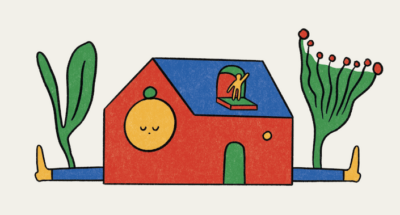
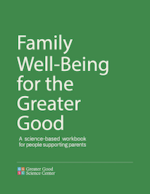
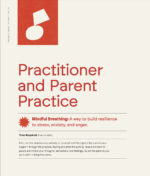
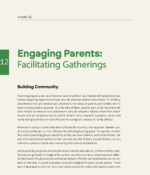
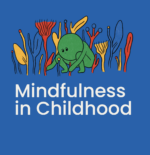
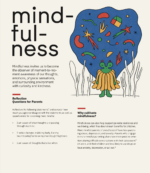
Comments